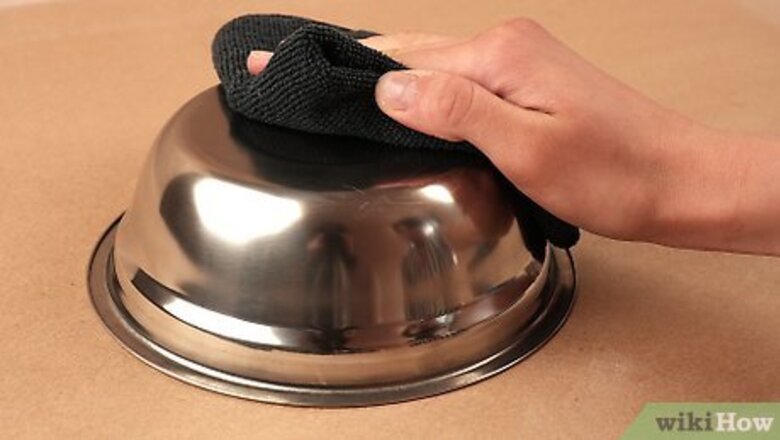
views
Preparing the Metal Surface

Clean the surface of the metal object you want to paint. Remove dust or other particles with a moist rag. Make sure to go over the entire surface of the metal. Then, you can allow the metal to air dry or quickly go over it with a cloth.
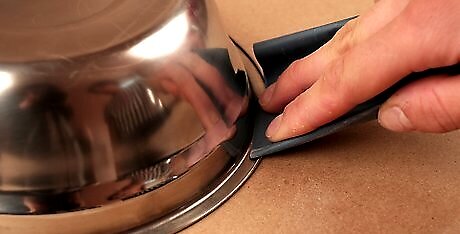
Remove rust from the metal surface. There are several ways to remove rust. If the rust is extreme, you can use a rust removal chemical that comes in a gel or liquid form. If rust is heavy but manageable, you can use a grinder or sander. To remove light rust, you can use sandpaper or a finer pad on the sander. Be sure to remove the rust outside and away from children.
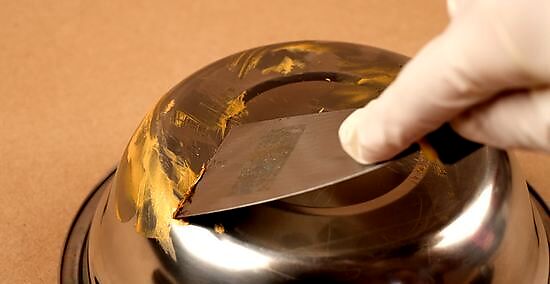
Take off any loose paint. The rust removal process may have removed the loose paint, but if not, you can use a putty knife, scraper, or wire brush to remove it. Simply scrape the paint until it comes completely off. Be sure to wear gloves, goggles, and a face mask as you do this. It's especially important to wear protection if you're dealing with old paint that contains lead, as this can be dangerous to inhale.
Sand the metal surface. The metal surface needs to be smooth in order for the spray paint to turn out well. First, use a cloth to wipe off any debris that may have accumulated during the sanding process. Then, begin sanding the surface with 120-grit sandpaper. Focus on the any bumps or ridges with this sandpaper. Then, finish off the job with 200-grit sandpaper to make the entire surface even and smooth.
Priming the Metal
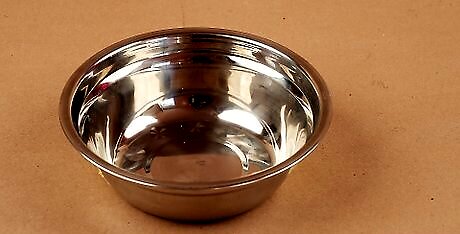
Select a location. Select an area that is well-ventilated. Make sure the area isn't close to a car or anything that could get spray paint on it. An ideal location to spray paint is a place that is outdoors and protected from the wind. Avoid humid conditions. Humidity can affect how your paint dries and adheres. Choose locations and times of day that are less humid.
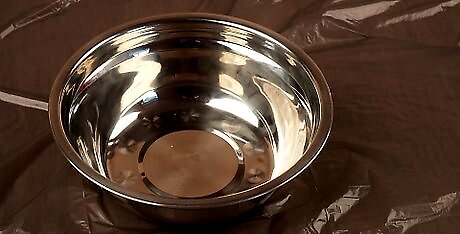
Protect surfaces with drop cloths and garbage bags. Make sure to protect surface that you wouldn't want the spray paint to get on. Position a drop cloth, cardboard, wood pieces or garbage bag to catch any loose particles that fly off while you paint. Furniture or other items that are several feet (or meters) away should be fine. You can go ahead and grab your personal safety gear (goggles, mask, etc.) at this point.
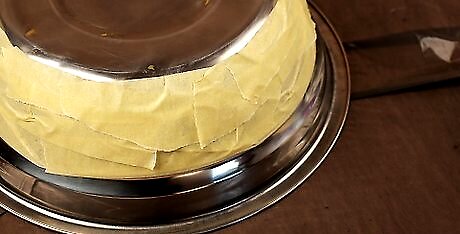
Cover parts of the metal surface you don't want to paint with masking tape. Unless you want to paint the entire metal surface, you will need to cover the parts you don't want to paint with masking tape. You can put the tape over small surfaces (like handles), or you can put a piece of plastic (like a trash bag) over larger areas and secure it with masking tape.
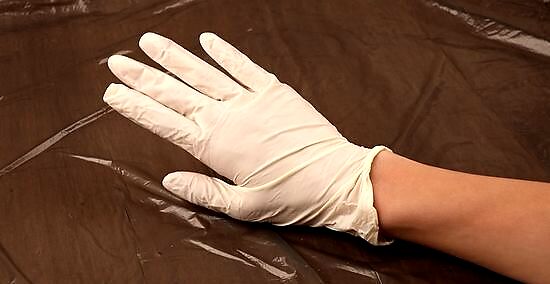
Wear protective gear while you paint. Inhaling fumes from the paint can be dangerous, so make sure to wear a mask that covers your nose and mouth as you paint. You will also need to protect your eyes with goggles. Along with goggles and a mask, wear gloves to protect your hands from excess paint and an apron to protect your clothes.
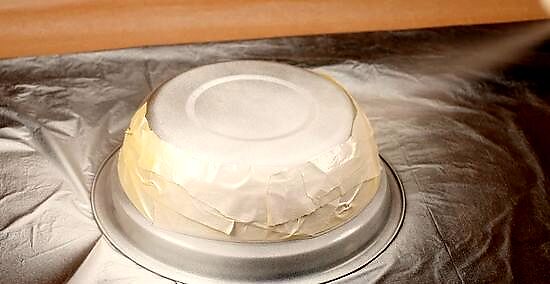
Prime the metal surface with spray-on primer. Using a primer is necessary to ensure that the final paint job is smooth and even. You can use the spray primer of your choice—as long it is made to be used on metal. Hold the primer 6 to 8 (15 to 20 cm) inches away from the surface and spray. Paint the entire surface. Then, allow it to dry for at least 10 minutes.
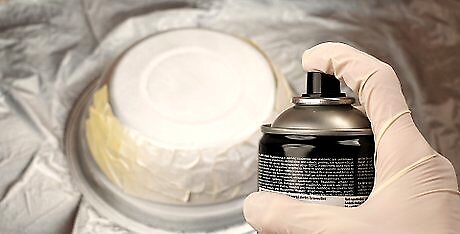
Spray on another coat of primer. Typically, one coat of primer won't be enough. After the first coat has dried, go over the metal surface yet again. Wait 10 minutes for it to dry and then inspect the metal. If it looks evenly coated, you can move on. But, if it doesn't seem to be coated, repeat the process up to two more times.
Painting the Metal

Shake the paint can to mix the paint. Turn it from top to bottom in your hand, and shake it for at least two minutes. You will hear the mixer ball rattle in the can. Repeat the mixing process throughout the project as you paint.
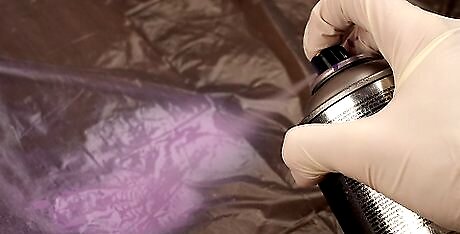
Test your paint on scrap material. Check to make sure the nozzle is clear. Get used to how the paint flows from your nozzle as you do your test painting. This will also allow you to see what the color will look like when it is actually being used.
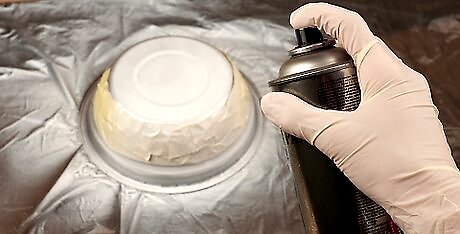
Hold the can approximately 10 to 12 inches away from the metal surface. Getting too close to the surface can cause drips and runs. Painting too far from your surface causes uneven spraying. Holding the can 10 to 12 inches (25.4 to 30.5 cm) will help the paint job be as even and smooth as possible.

Paint with a sweeping motion. The sweeping motion should be from left to right. Apply thin coats of paint to avoid drips and runs. Thicker applications dry more slowly than thinner coats and do not dry as evenly. Overlap your passes with the spray paint until the paint begins to look even and opaque. Pause after each sweeping motion by letting go of the trigger.

Allow your painted surface to dry for at least an hour. Waiting at least an hour will ensure the paint is dry before you apply another coat. You can wait a slightly shorter or longer amount of time if you think the paint takes less or more than an hour to dry. Avoid touching the paint to see if it is dry.
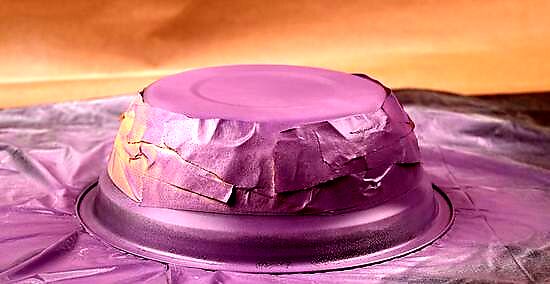
Spray on a second coat of paint. Once the initial coat has dried, repeat the process. Wait another 30 minutes to an hour for the second coat to dry and then inspect the surface. Repeat the process two to three more times if needed. Allow the second coat of paint to dry before handling the object.
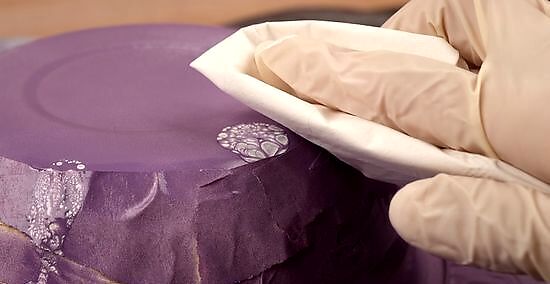
Correct any mistakes. You may see a few drips or spots due to pauses during the painting process. If the paint is still wet, you can remove the marks with a clean and dry lint-free cloth. If the paint has dried, you can use fine-grit sandpaper to remove the marks.




















Comments
0 comment